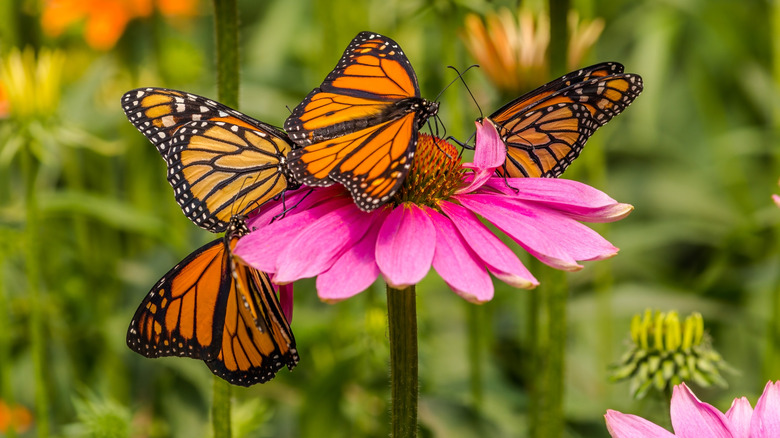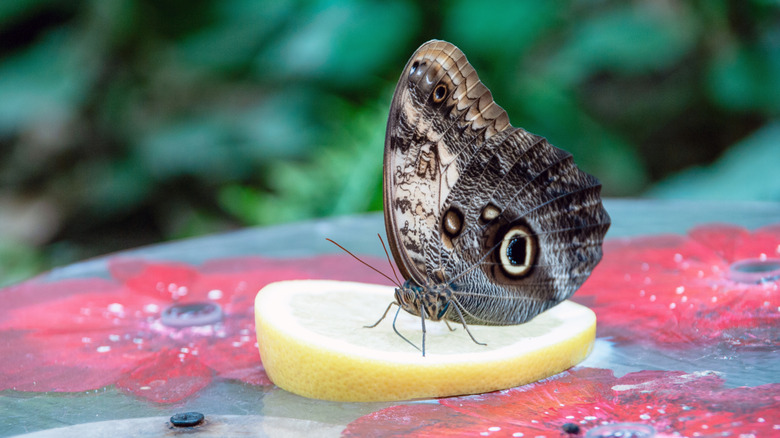This Simple Fruit Trick Could Be The Key To A Garden Full Of Beautiful Butterflies
You do not need to plant anything new if you want the key to attracting more butterflies. Instead, you could try a simple trick using something you already have in your kitchen: lemon peels. While scientific studies don't back this method, it's gaining attention from gardeners and experts who say citrus peels may help attract these colorful pollinators. The idea is that butterflies, drawn to the sweet, citrusy aroma, will visit a shallow dish of peels placed among your plants. As they stop by for the scent or the moisture from any residual juice, they may linger and assist with pollination.
Using leftover lemons in this way helps reduce food waste and brings vibrant life to your outdoor space. Many gardeners love the dual benefit of creating beauty while keeping peels out of the compost or trash. The bright yellow color of lemon rinds might even provide a visual cue, helping butterflies spot the food source from a distance. And unlike more complicated or costly butterfly-attracting techniques, this hack is accessible to nearly anyone with citrus fruit.
Butterflies play a critical role in supporting healthy ecosystems, and finding ways to invite them into your yard can boost biodiversity and the charm of your garden. These helpful insects pollinate many plants, from vegetables to flowers, which also supports other wildlife. When combined with practices like planting butterfly-friendly flowers, adding citrus peels can become part of a well-rounded plan for creating a pollinator-friendly space. Next time you use a lemon, save the peels and see if this trick encourages some fluttering visitors.
How to use lemon peels to attract butterflies and why it might work
Setting up your citrus butterfly station is as easy as it sounds. Place your used lemon peels or other citrus rinds in a shallow dish or on a small plate, surrounded by water to deter ants. Position this near nectar-rich flowers, in sunny spots where butterflies like to bask, or in areas where you've seen them visit before. The idea is that the citrus scent, which butterflies seem to enjoy, will draw them in. On warm days, the moisture in the peels provides a drink to thirsty insects, while the bright rinds can act as a visual lure. Some gardeners also report success placing the peels near unused firewood or dead branches where butterflies naturally perch.
Lemon peels have several surprising uses in the garden, from a lemon-scented hack to deter some pests to supporting beneficial insects like butterflies. However, most of this is based on anecdotal reports rather than scientific studies. Still, many people find it worth trying, especially when combined with other eco-friendly practices. For example, pairing natural pest deterrents like citrus peels with other pollinator-friendly strategies can create a healthier environment for plants and pollinators.
Reusing lemon peels this way adds value to your yard while reducing waste. It can complement your efforts to start a pollinator garden that supports butterflies and bees, making your space more vibrant and alive. This citrus trick might not guarantee a garden full of butterflies, but it's a harmless, inexpensive, and eco-friendly method to try.

